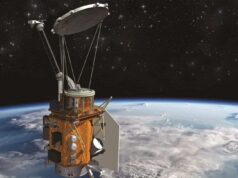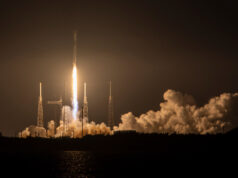
In a groundbreaking move, the National Reconnaissance Office (NRO) and the United States Space Force have successfully launched multiple “watchdog” satellites into space. The mission, known as “Silent Barker,” aims to monitor potential adversaries in the high orbits favored by spy satellites, communication stations, and other high-priority U.S. assets. The satellites were launched aboard a United Launch Alliance Atlas 5 rocket from Cape Canaveral Space Force Station, Florida.
Mission Objectives
The primary objective of the Silent Barker mission is to place satellites in geosynchronous orbit, approximately 22,300 miles above the Earth’s equator. These satellites will:
- Monitor day-to-day activities in that orbital regime.
- Track routine satellite movements.
- Detect any unexpected or potentially threatening activities.
According to NRO Director Chris Scolese, the mission serves as a “watchdog” in the geosynchronous orbit, aiming to protect high-value assets belonging to the U.S. or its allies.
Technical Aspects
The Atlas 5 rocket, powered by a Russian-built RD-180 first-stage engine and five GEM-63 strap-on solid-fuel boosters, lifted off from pad 41 at Cape Canaveral. The launch had been delayed from August 29 due to weather conditions and technical issues. This marks the 18th and final Atlas 5 NRO flight as ULA transitions to its new Vulcan rocket.
Strategic Importance
The mission holds significant strategic importance for the U.S. military and intelligence communities. It aims to deter potential adversaries like China and Russia, who are believed to have satellites capable of maneuvering, inspecting, and possibly interfering with U.S. and allied spacecraft.
Lt. Gen. Michael Guetlein, commander of Space Systems Command for the U.S. Space Force, emphasized that the mission serves as a deterrent by making it clear to potential adversaries that the U.S. has the capability to monitor activities in the geosynchronous belt.
Future Prospects
- Silent Barker is the first of at least two planned missions of this type.
- The program is expected to be fully operational by 2026.
- It will significantly improve the U.S.’s ability to make informed decisions regarding space activities.
Key Takeaways
- The Silent Barker mission aims to monitor potential threats in high orbits.
- It serves as a significant deterrent against potential adversaries.
- The program is a crucial step in enhancing the U.S.’s space monitoring capabilities.
Would you like to know more about this topic?










